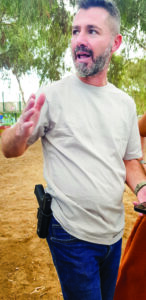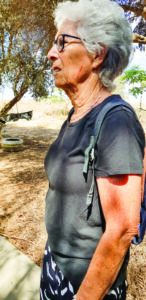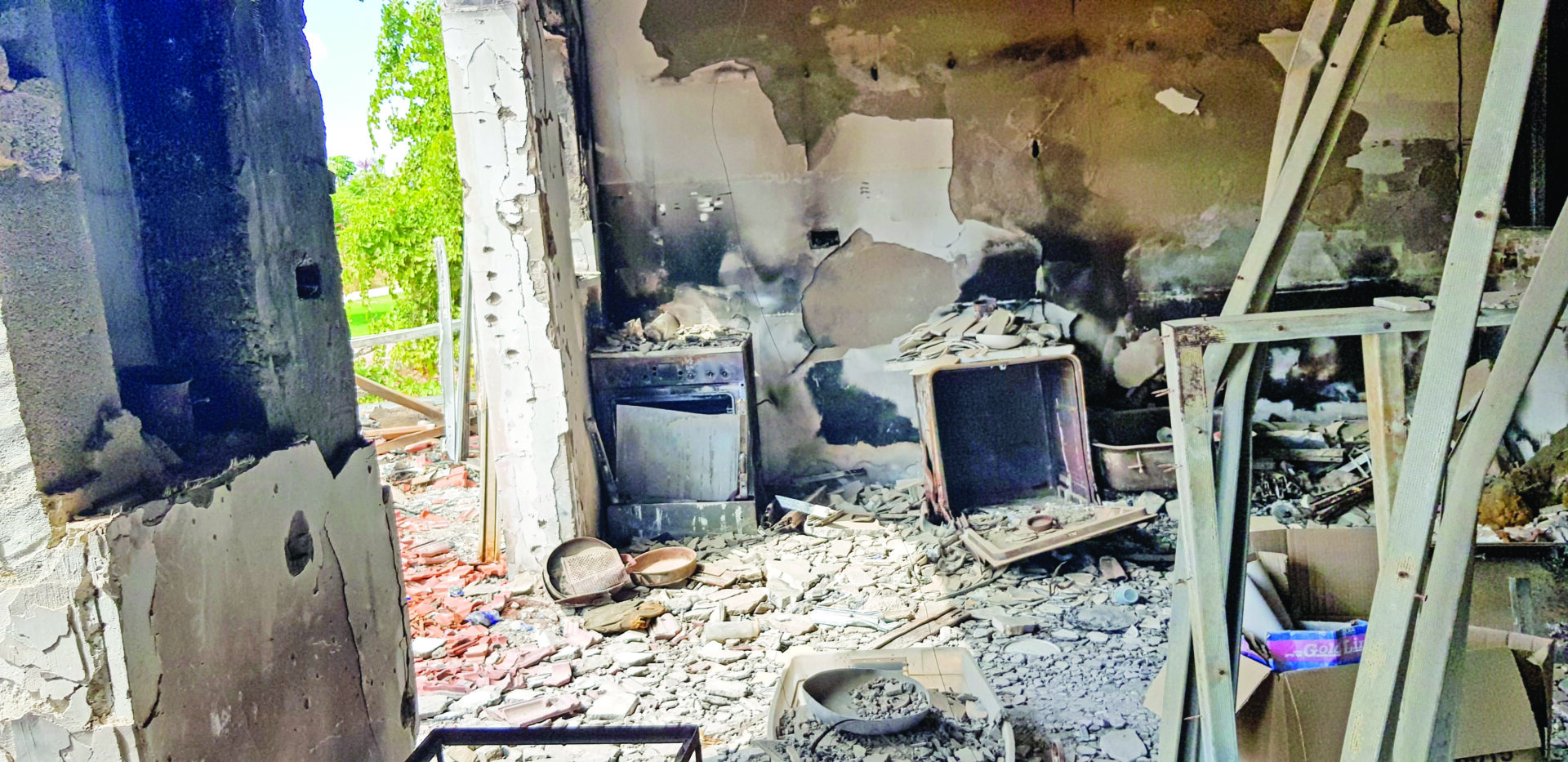Gaza Envelope/New Delhi: ‘If they think we will go away from here, we will not,’ say Hamas attack survivors.
Route 232 has a new name. Located deep in the southern part of Israel, it moves through the western Negev desert to connect a group of kibbutzim—plural for kibbutz, or a communal settlement—inside 3 to 6 km of the Gaza border. This area is known as the Gaza Envelope, Israel’s southern district, where the kibbutzim of Be’eri, Re’im, Magen, etc, are located. Although originally a desert, Gaza Envelope has been transformed by Israel into a land where agriculture is possible. The kibbutzim are clean, green and quiet oases of prosperity, reflecting the sheer persistence and hard work of the Israelis over the decades. Be’eri is one of the oldest settlements here, founded in 1946, even before Israel came into existence in 1948. These are the areas where even Gazans would come to work and make a living. Fenced on all sides, and with individual houses, a community dining hall, a children’s nursery, etc., there is a bucolic quality about the place. But then came 7 October 2023. It were these rural settlements, the kibbutzim bordering Gaza that were the first to be attacked by thousands of terrorists who crossed into Israel. Accompanied by Gazan civilians, they dismembered the district, going on a spree of looting, killing, raping, decapitating ordinary civilians, who had barely woken up on that fateful Saturday morning. It was Route 232 that brought the Hamas and others to the kibbutzim—the road that they controlled by shooting and setting fire to anything and anyone on sight. It was this road that the Israel Defense Forces (IDF) would have to take to save the people. So the Hamas nukhba (“elite” terrorist forces) squads waited here in the bus shelters dotting the road to ambush the IDF.
Nearly 1,200 people were killed that day, while over 200 people were taken hostage.
Route 232 has a new name—Death Road 232.
Since the fear of rockets, and now even ballistic missiles, raining down on them is intrinsic to the lives of Israelis, every building in the country must have a safe place/room where they can hide—a shelter, a bunker, a stairwell—when missiles start coming, as it happened on Tuesday, 1 October, when Iran fired hundreds of ballistic missiles at Israel. Since bus stops do not have bunkers, the Israeli government has built covered “cubicles” at the bus stops. It was in one of these concrete rooms that a bunch of youngsters had taken shelter on the day the Hamas attacked. Some of them had fled from the Nova Music Festival near kibbutz Re’im where the Hamas terrorists were massacring the young revellers. Around 15 boys and girls were in one particular shelter when the Hamas attacked. The two young soldiers who were there, kept tossing out the grenades that the terrorists kept lobbing into the room. But given the innumerable gun-toting killers who had surrounded the shelter, the fightback did not last long and the occupants of the room were gunned down. The bus shelter with its bullet-scarred walls is now some sort of a memorial, with visitors regularly coming here to light candles and place flowers to remember the victims.
“The safe rooms were built for missiles and rockets, not for terrorists,” says Neeli Bar-Sinai, who is in her mid-seventies and is a survivor of the attack on kibbutz Be’eri. Her husband was shot dead by the terrorists, but she is calm, composed and matter-of-fact when describing what all transpired that day. A lady who is brave beyond imagination, she takes the group of visiting Indian journalists around the kibbutz as she recounts the horrors of 7 October. That day, the WhatsApp group of the mothers of the kibbutz started buzzing. “They are downstairs” said one message. “They are breaking in”, said another. “They are shooting everyone”, said the third. Houses were set on fire even when inhabitants tried to hide. Rocket-propelled grenades were launched. Men and women were shot dead, some were decapitated, mutilated.
An elderly man, Avshalom Haran was murdered, while eight members of his family were taken hostage. Flamethrowers were used to set his house on fire. The safe room of the house is dark with soot. The intense heat has caused the ceiling fan’s blades to bend and hang like a black, wilted flower. The charred house is a skeleton of what it used to be.


The kibbutz is dotted with empty spaces where there used to be beautiful homes that were burnt down by the terrorists. These houses were not in a condition to be salvaged and had to be demolished. Be’eri was the hardest hit among all the kibbutzim that day. It lost around 100 of its 1,200-odd residents, plus a number of people as hostages, at least 11 of whom are yet to be released. Neeli Bar-Sinai is not hopeful that all 11 are alive.
At a short distance from Be’eri is Re’im, which is now known for the Nova Music Festival, an open air music festival where hundreds of youngsters had gathered; 364 of them were killed there in the most brutal manner, while 40 were taken hostage. Lt Col (res) Eran Masas was the first responder to the site of the massacre. He remembers seeing bodies piled everywhere—almost everyone dead. The bodies had been mutilated, many of them had been burnt alive. The women had been raped and burnt. At least one girl had been raped, killed and nails inserted in her vagina. He saw Hamas trucks carting off hostages. He got into gunfights with a few terrorists, whom he killed. He also saw trucks carrying drugs. He believes that unless one is high on meth, one cannot commit such acts of savagery.
However, the drugs angle is dismissed by a source in the IDF who describes the Hamas terrorists as monsters who did not need to be high on any substance to commit the genocidal crimes they committed. They had been brainwashed into believing in the extermination of the Jews. A death cult, their high comes from torturing and killing. The videos of the Hamas—many of them retrieved from the body-cams worn by the terrorists—that the IDF has retrieved are the most gruesome, with extreme torture and decapitation caught on camera.
But how did such a huge intelligence failure take place? There was complacency in the Israeli security apparatus. All the attention was being devoted to fight the Hezbollah—a potent military force—and the focus had shifted from Hamas. Critics say that Israel did not get any “humint” (human intelligence) in Gaza for five years. Israel was relying too much on technology and did not have enough boots on the ground. 7 October 2023 was a Saturday. It was Sabbath and the checkpost on the Gaza border had barely 10 people, when the norm is 10-15 times more. The Hamas terrorists, numbering 3,000-4,000, came prepared, after meticulously planning every move. The “maps” they carried had every house they would attack mapped out, with detailed information about the residents’ schedule. This proved that they had conducted recces and had got inside information from the Gazans who used to work in the kibbutzim.
ONE YEAR LATER
One year later, Gaza Envelope is rebuilding itself. To rise from the ashes requires extreme resilience, but that’s what Israel’s story is all about—resilience. Says Neeli Bar Sinai, “It took decades to build what we did. Gaza does nothing, grows nothing. A few years ago we gave them very hi-tech agricultural (equipment)… What did they do with it? It became a desert again. Imagine they conquer us, they kill us, but what will they do with this land after that? It will become a desert again. They depend on us for everything—food, water, electricity and this is what they do to us.” “But if they think we will go away from here, we will not,” she asserts quietly.
As a source in the IDF mentions, “We came here to live, not to die.”
Then there is the grief for the hostages who are still in Hamas custody, numbering over a hundred. All of Israel is plastered with yellow ribbons and posters saying “bring them home now”. Avshalom Haran’s family members have been released, except for his son-in-law, Tal. Haran’s son Yuval has been wearing a “Bring them Home Now” T-shirt, with Tal’s photo. He says that this is not about politics; that the issue is not even about the Israeli-Palestinian problem. “It’s about humanity.” “There are still babies in captivity, and children and women. We don’t want revenge. We just want our family back,” says Yuval.
The memories are too harsh. Lt Col (res) Eran Masas, who was the first responder to the Nova Music Festival, says he has not been able to forget the stench of burning flesh. “It comes back to me every morning.”
Neeli Bar Sinai sits quietly with her head in her hands as Yuval Haran tells his family’s story. She believes that the Gazans are not only completely brainwashed, but also terrorized. When asked if she can ever forgive the ordinary Gazans if not the Hamas, she replies, “They came here, the civilians, and when they had the chance to kill, they did—very joyfully.” You cannot differentiate the Gazans from the Hamas, she says.
How can there be any forgiveness when faced with pure evil?
The wound is too raw, the divide is too deep and there is no reconciliation on the horizon.

